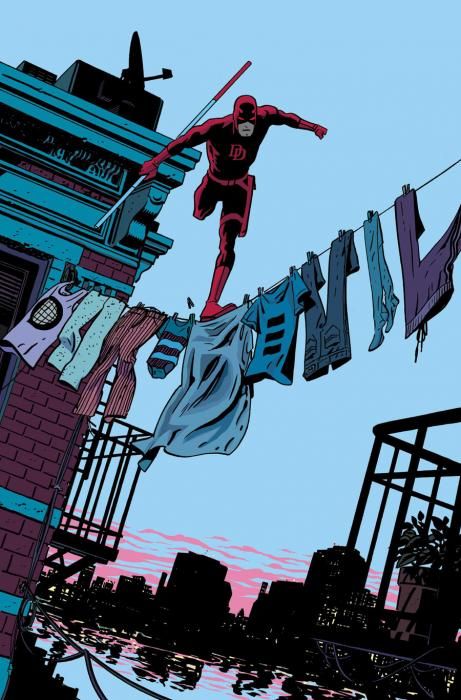It's been three years since the current "Daredevil" helmed by Mark Waid kicked off, but the buzz has died down a bit. Maybe it was the artistic shuffle, maybe it was just feeling overly familiar with the book. Whatever the reason, it's really too bad, because Waid and Chris Samnee are turning out a fun-to-read, beautifully-drawn book every month. And to that, "Daredevil" #26 is no exception.
Waid juggles two stories here; Foggy's treatment for cancer and Daredevil's attempt to uncover the mastermind behind Klaw, Coyote and Ikari. Both get a good amount of page time, and it's one of the things I appreciate about this series. It would be easy to toss Foggy's plight into the background, or to hand wave it into something easily fixed. Instead it interweaves with Daredevil's paranoia as he fears the return of Ikari, and Foggy gets to help Daredevil figure out who's behind the events of the past 25 issues. It's honestly a bit of a stretch, but at the same time it's nice to have Foggy involved even if the logic leap is nonsensical.
What I especially like, though, is how Samnee brings Waid's ideas to life. The mastermind in the iron lung is intensely creepy, and this is a character for whom most of his appearances involve a pair of eyes staring from out a very narrow peephole. This is a character who can't move more than his mouth and lungs, and still there's such menace in that singular stare that you can't help but be a little creeped out. I'm loving how Samnee puts a page together, too; it's not just an assortment of panels but rather a large, integrated final drawing. The individual zoom-ins on the mastermind's body inside the iron lung (all overlaid on an outside view) work together with greater impact when all viewed together, and in no small part because of the careful way that Samnee's arranged them on the page to help the eye flow through them. When Daredevil's running through the subway tunnel, the composition is just about perfect; the removal of everything but Daredevil as darkness envelops him, the echo zooming back in the midpoint of the page, the way that even Daredevil's walking stick can be used to move us from one panel to the next.
"Daredevil" #26 is a strong comic, and Waid and Samnee even provide a back-up feature that focuses not so much on Foggy but on the resilience of children and how they'd react in a hospital ward when their world also has superheroes. It's a nice way to wrap up the comic, and give us a little extra bang for our buck. But more importantly, don't think that because "Daredevil" isn't getting quite the same attention these days that it's not worth checking out. Trust me, "Daredevil" is as good as ever.

